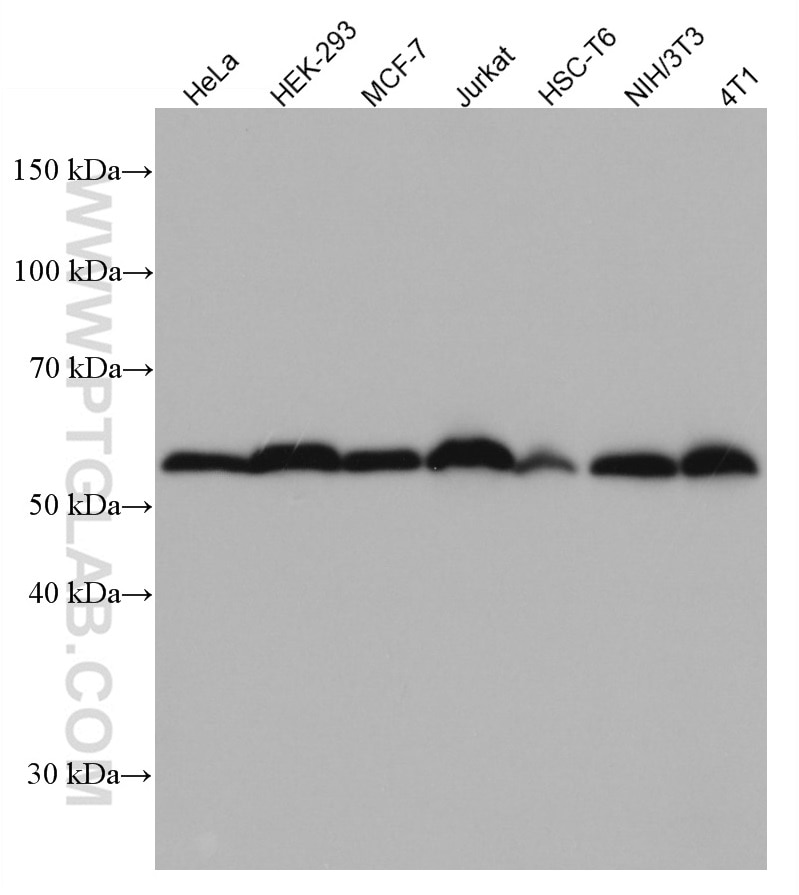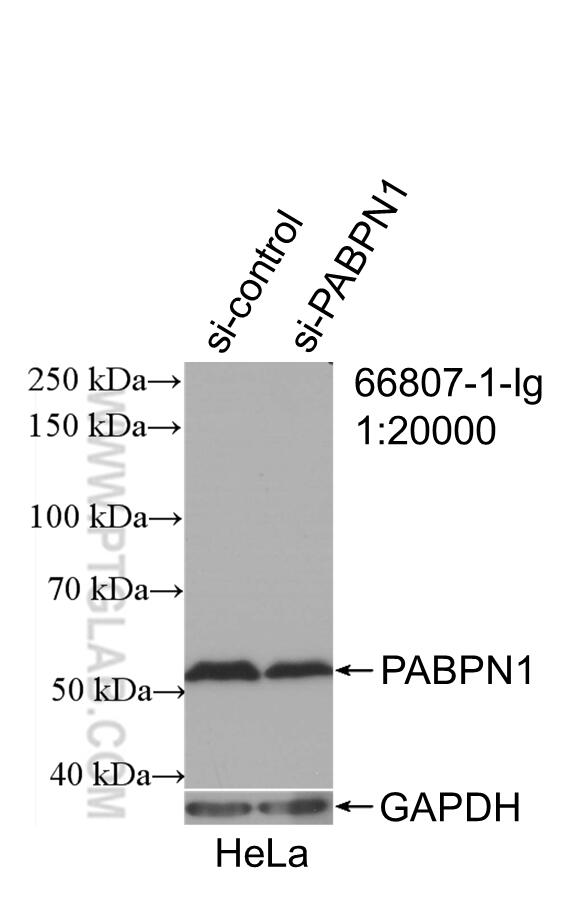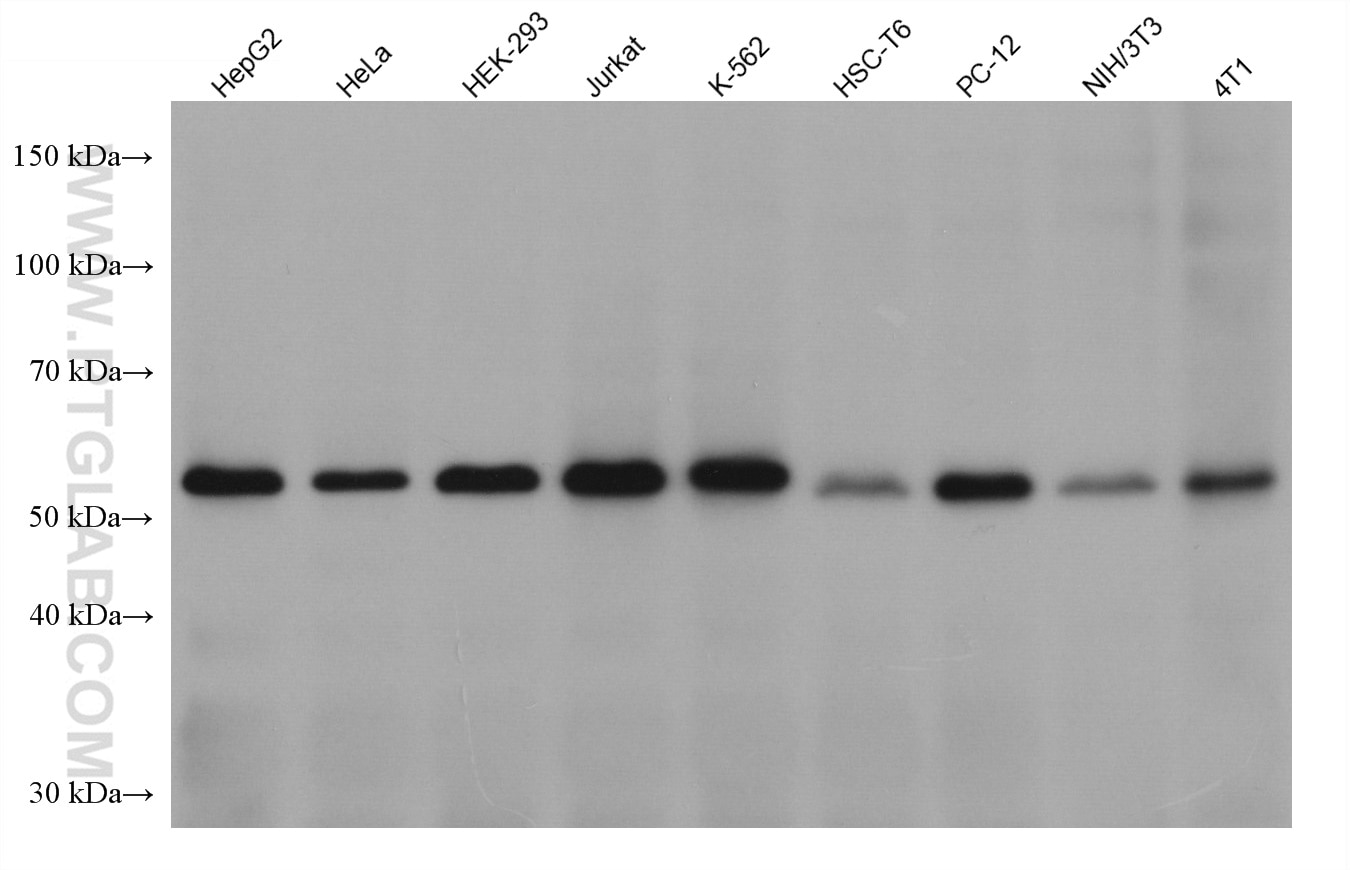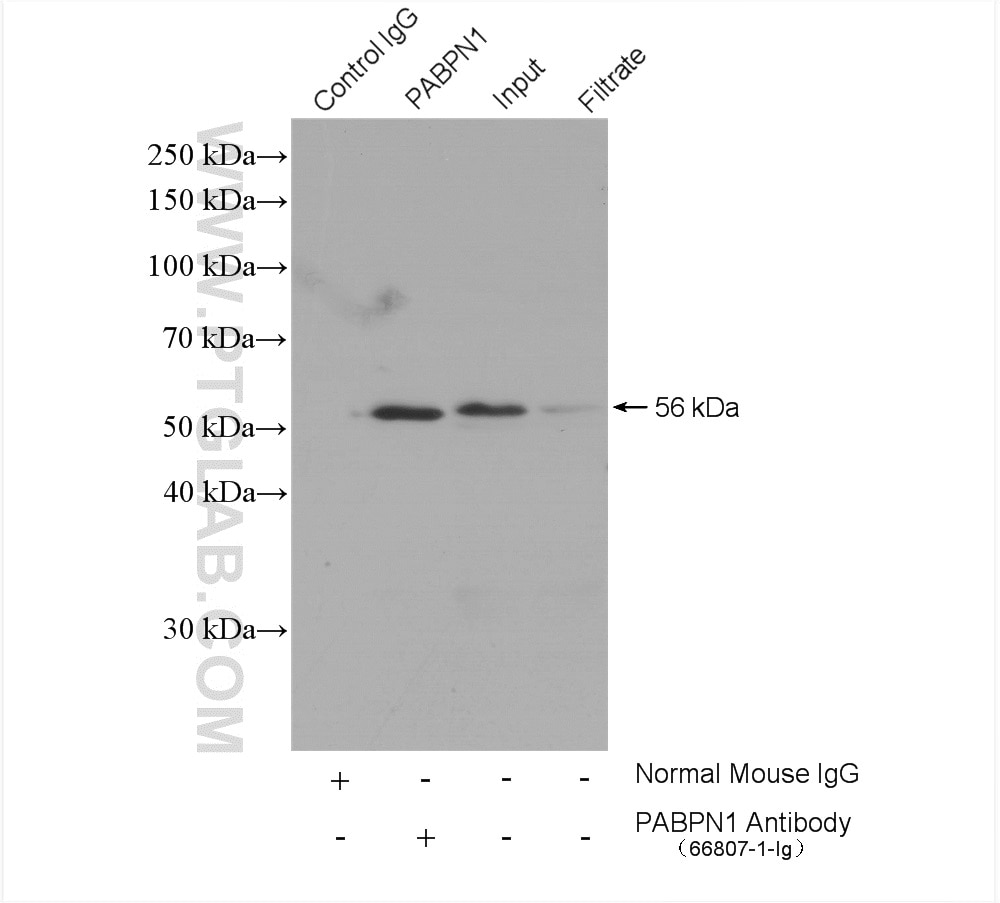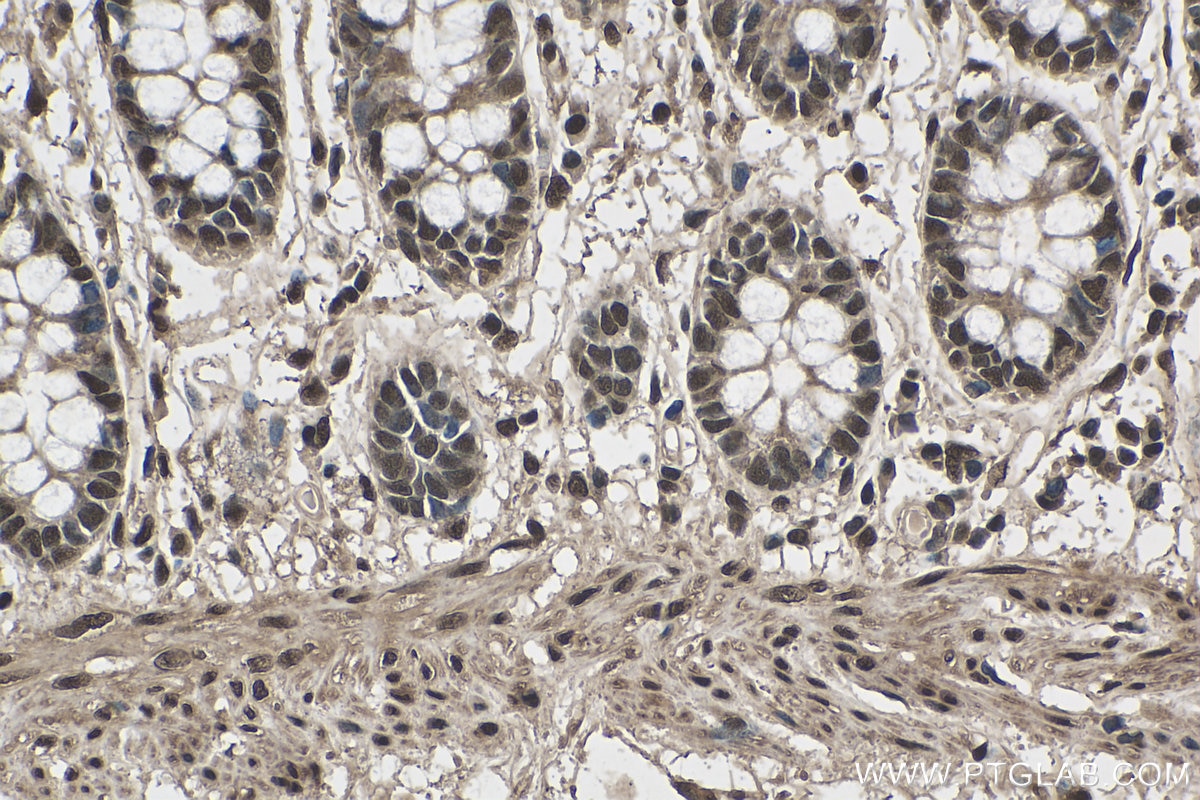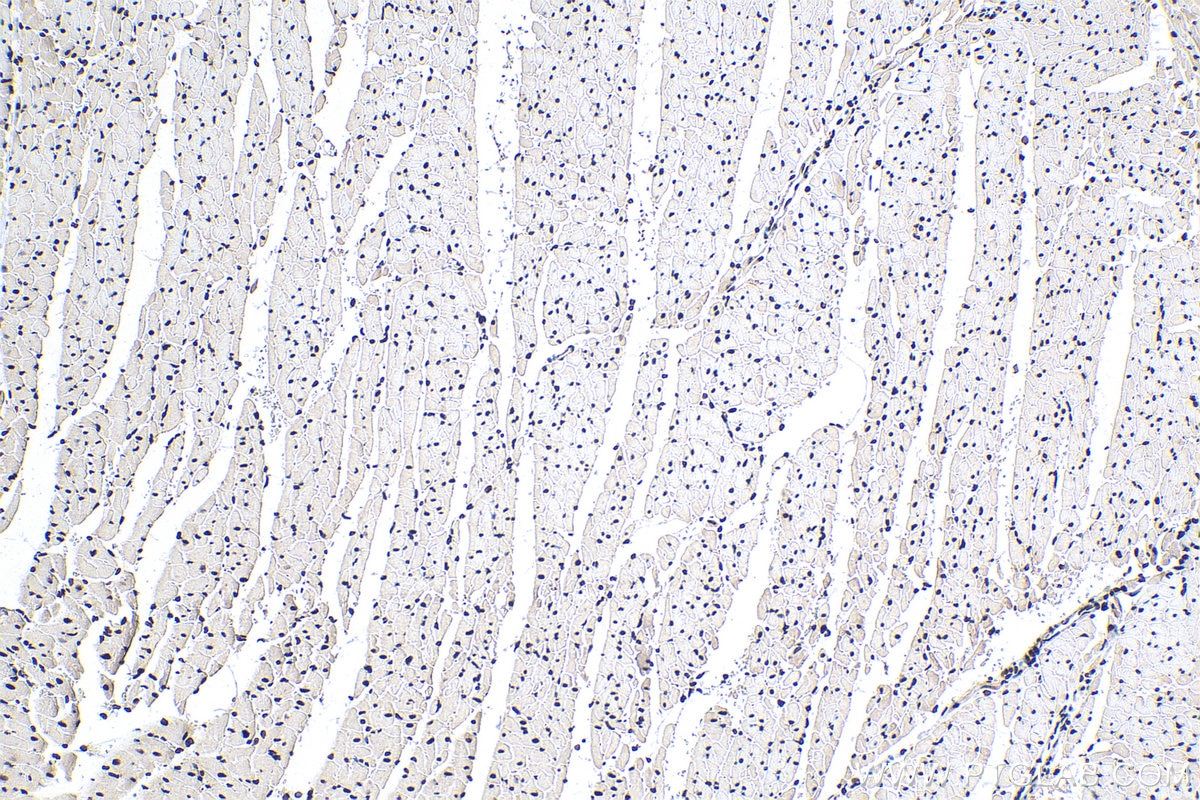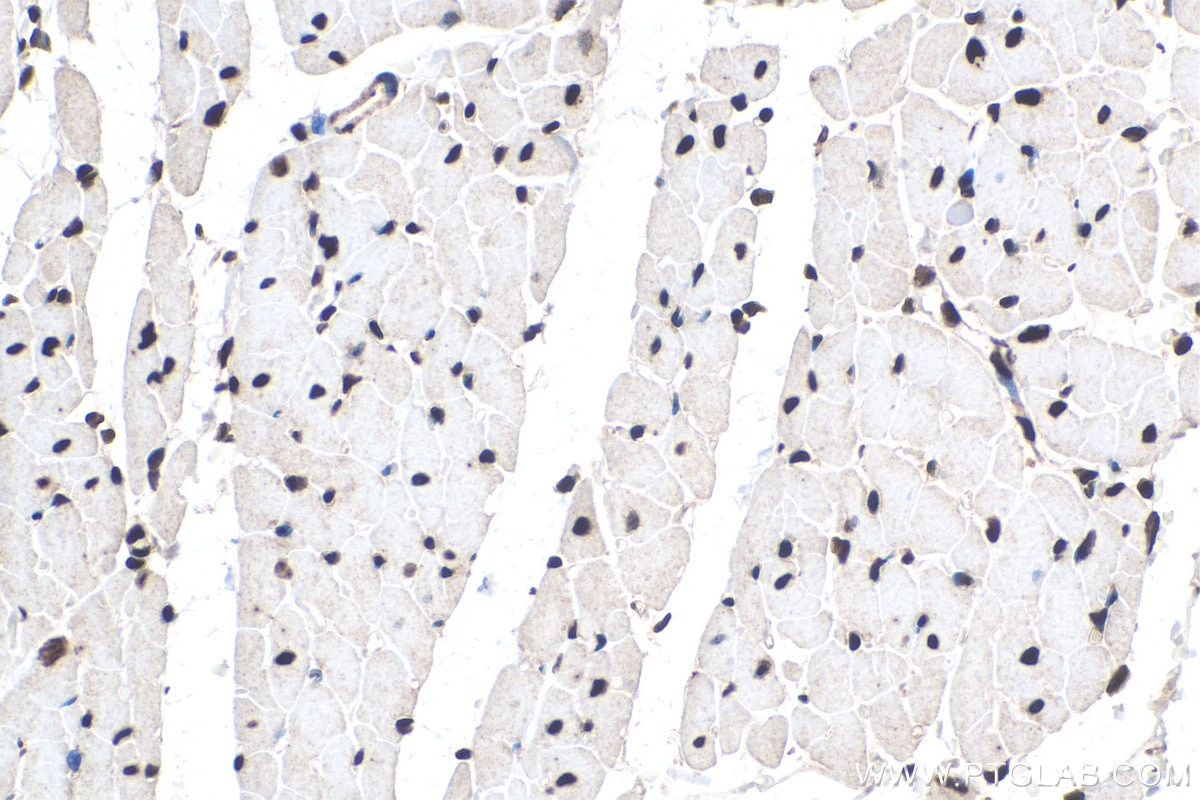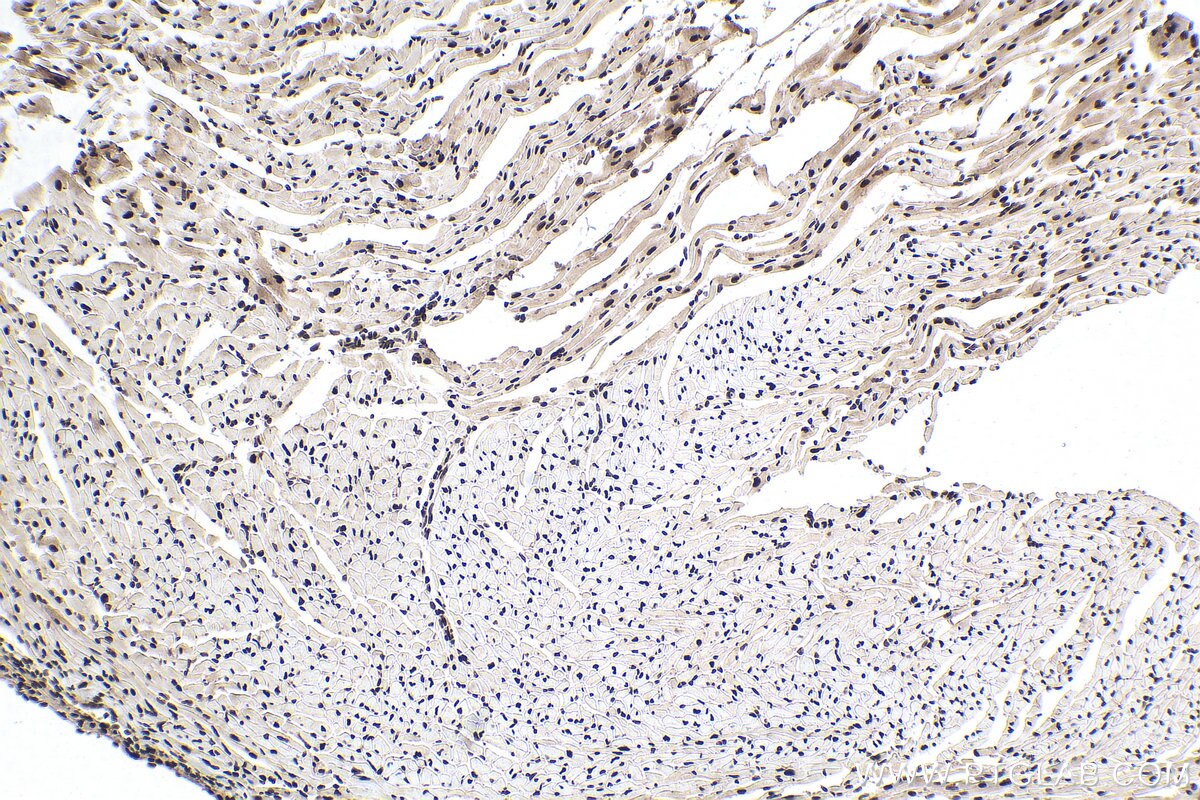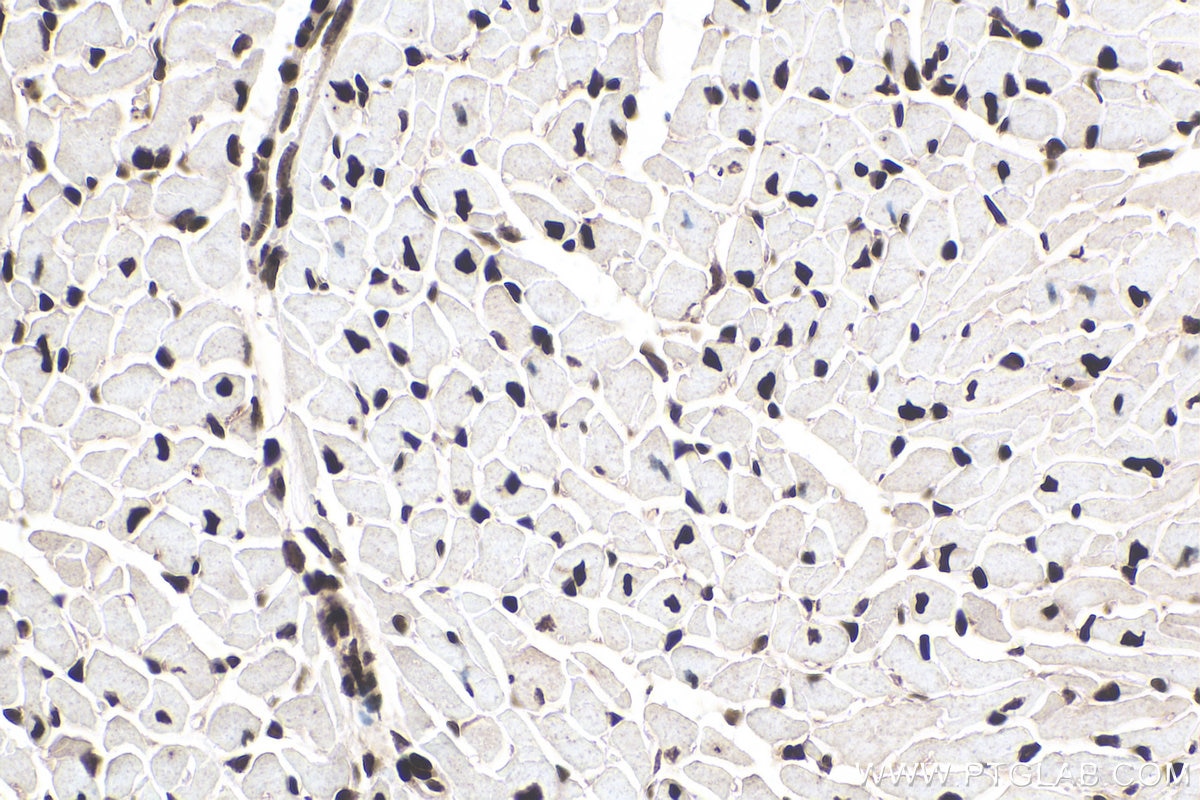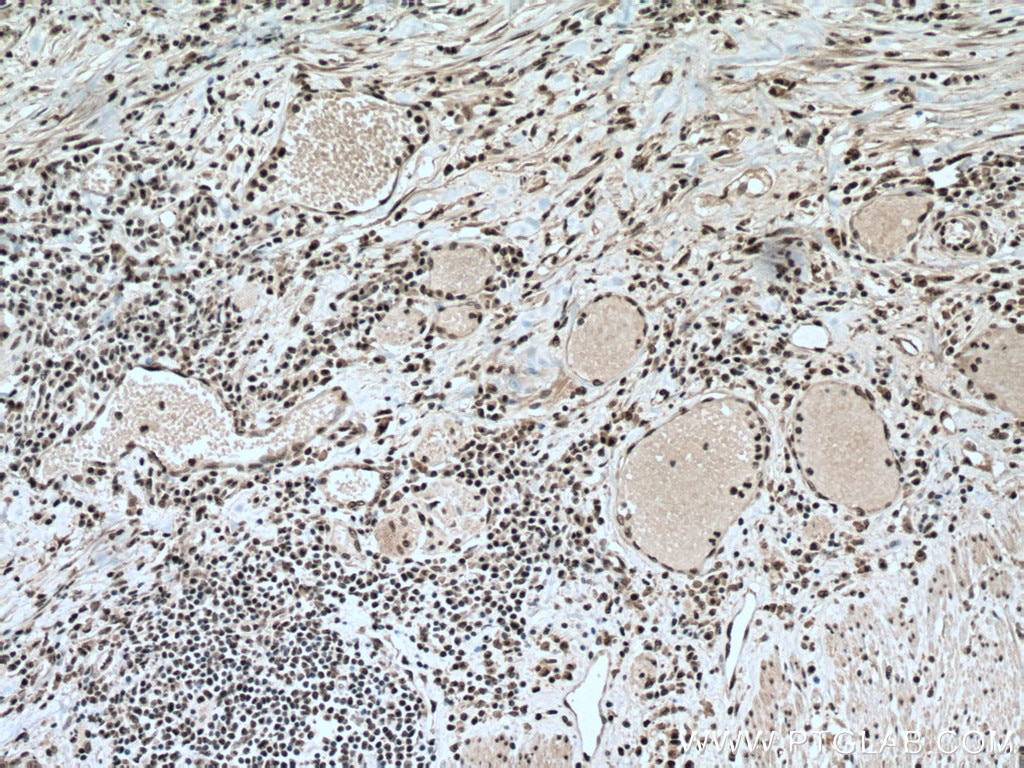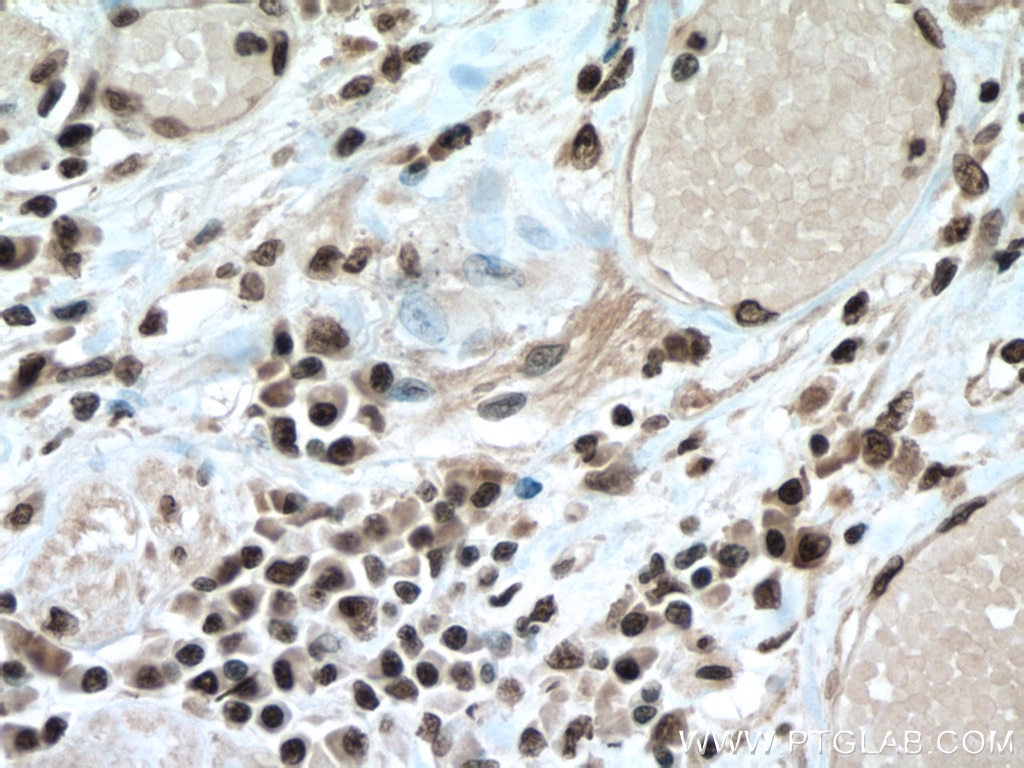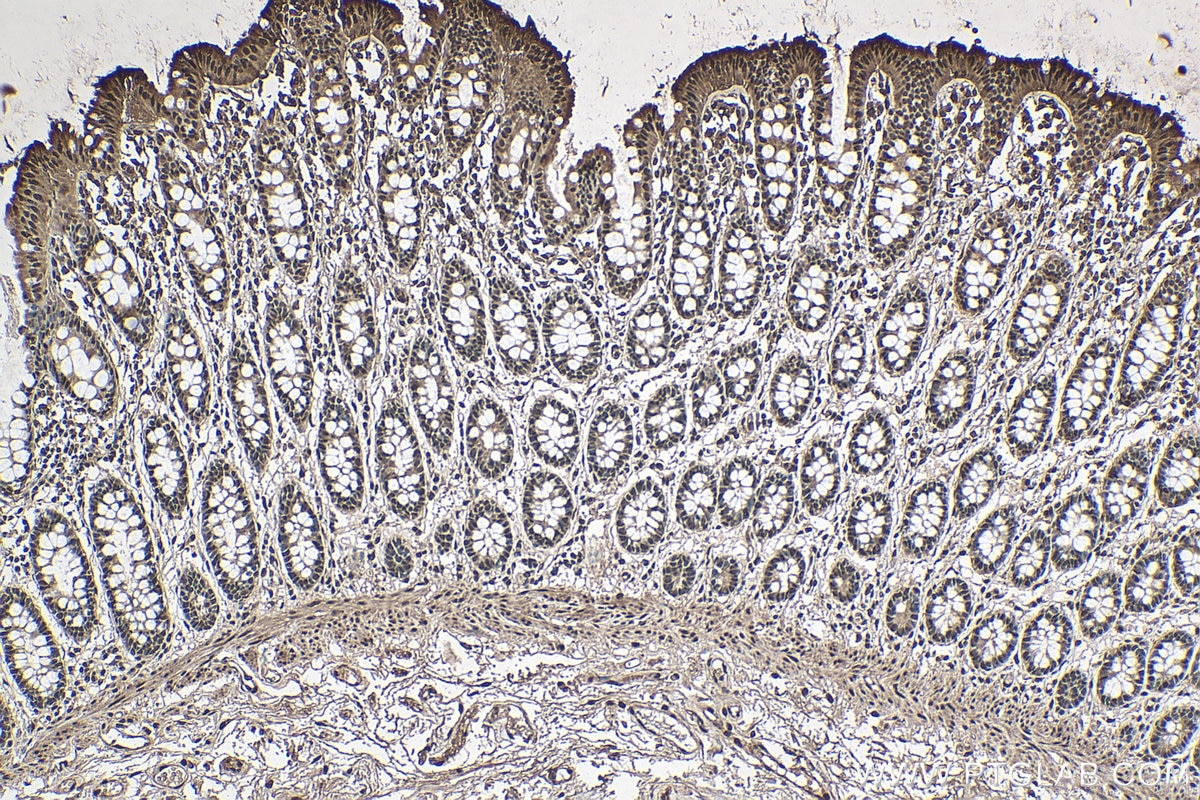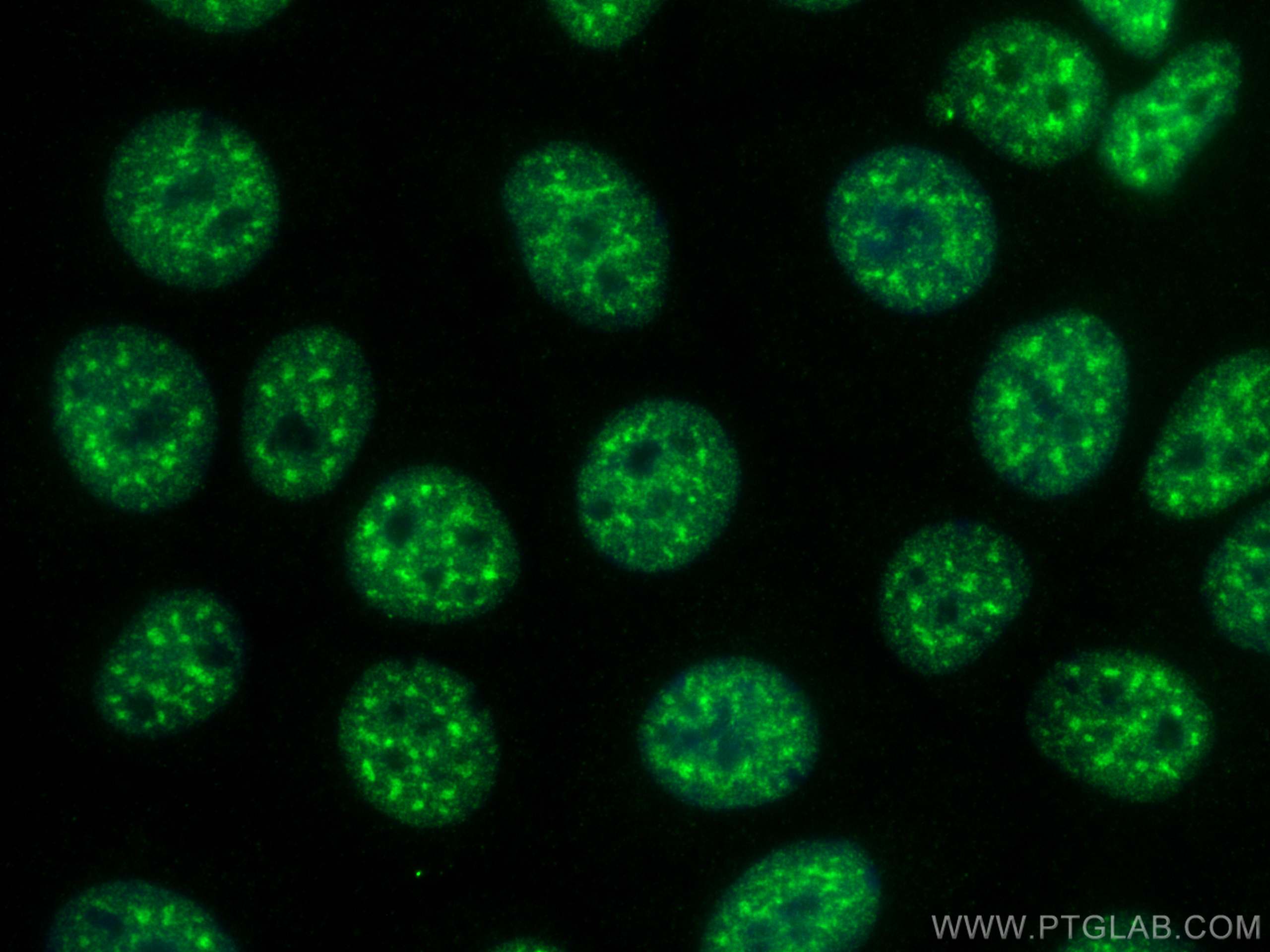- Featured Product
- KD/KO Validated
PABPN1 Monoklonaler Antikörper
PABPN1 Monoklonal Antikörper für WB, IHC, IF/ICC, IP, ELISA
Wirt / Isotyp
Maus / IgG1
Getestete Reaktivität
human, Maus, Ratte
Anwendung
WB, IHC, IF/ICC, IP, CoIP, RIP, ELISA
Konjugation
Unkonjugiert
CloneNo.
3C12E12
Kat-Nr. : 66807-1-Ig
Synonyme
Geprüfte Anwendungen
| Erfolgreiche Detektion in WB | HeLa-Zellen, 4T1-Zellen, HEK-293-Zellen, HepG2-Zellen, Jurkat-Zellen, K-562-Zellen, MCF-7-Zellen, NIH/3T3-Zellen, PC-12-Zellen |
| Erfolgreiche IP | Jurkat-Zellen |
| Erfolgreiche Detektion in IHC | humanes Kolongewebe, humanes Kolonkarzinomgewebe, Mausherzgewebe, Rattenherzgewebe Hinweis: Antigendemaskierung mit TE-Puffer pH 9,0 empfohlen. (*) Wahlweise kann die Antigendemaskierung auch mit Citratpuffer pH 6,0 erfolgen. |
| Erfolgreiche Detektion in IF/ICC | MCF-7-Zellen |
Empfohlene Verdünnung
| Anwendung | Verdünnung |
|---|---|
| Western Blot (WB) | WB : 1:1000-1:6000 |
| Immunpräzipitation (IP) | IP : 0.5-4.0 ug for 1.0-3.0 mg of total protein lysate |
| Immunhistochemie (IHC) | IHC : 1:500-1:2000 |
| Immunfluoreszenz (IF)/ICC | IF/ICC : 1:1000-1:4000 |
| It is recommended that this reagent should be titrated in each testing system to obtain optimal results. | |
| Sample-dependent, check data in validation data gallery | |
Veröffentlichte Anwendungen
| KD/KO | See 1 publications below |
| WB | See 5 publications below |
| IHC | See 1 publications below |
| CoIP | See 1 publications below |
| RIP | See 1 publications below |
Produktinformation
66807-1-Ig bindet in WB, IHC, IF/ICC, IP, CoIP, RIP, ELISA PABPN1 und zeigt Reaktivität mit human, Maus, Ratten
| Getestete Reaktivität | human, Maus, Ratte |
| In Publikationen genannte Reaktivität | human, Maus |
| Wirt / Isotyp | Maus / IgG1 |
| Klonalität | Monoklonal |
| Typ | Antikörper |
| Immunogen | PABPN1 fusion protein Ag27470 |
| Vollständiger Name | poly(A) binding protein, nuclear 1 |
| Berechnetes Molekulargewicht | 33 kDa |
| Beobachtetes Molekulargewicht | 50-56 kDa |
| GenBank-Zugangsnummer | BC010939 |
| Gene symbol | PABPN1 |
| Gene ID (NCBI) | 8106 |
| Konjugation | Unkonjugiert |
| Form | Liquid |
| Reinigungsmethode | Protein-G-Reinigung |
| Lagerungspuffer | PBS with 0.02% sodium azide and 50% glycerol |
| Lagerungsbedingungen | Bei -20°C lagern. Nach dem Versand ein Jahr lang stabil Aliquotieren ist bei -20oC Lagerung nicht notwendig. 20ul Größen enthalten 0,1% BSA. |
Hintergrundinformationen
Poly(A) Binding Protein Nuclear 1(PABPN1) is one of the isoforms of poly(A) binding protein (PABP) that locating to the nucleus in eukaryotic cells. And PABPN1 plays important role in mRNA stability by regulating of poly-A tail length, mRNA decay and proximal polyadenylation site (PAS) utilization at the 3'-UTR (PMID:23300856). Another report showed that PABPN1 shuttles between the nucleus and the cytoplasm to export poly(A) RNA from the nucleus (PMID:23601051). It is reported that PABPN1 is ubiquitously expressed in almost all tissues, however, mutations in PABPN1 causes Oculopharyngeal Muscular Dystrophy (OPMD) which affected in skeletal muscles specifically. Because of a mild reduction in PABPN1 levels is sufficient to induce muscle wasting (PMID:27152426). Acetylation, Methylation, Phosphoprotein are common post-translational modifications of PABPN1 protein. And 50-55 kDa bands have been reported (PMID: 29939290; 28361972).
Protokolle
| PRODUKTSPEZIFISCHE PROTOKOLLE | |
|---|---|
| WB protocol for PABPN1 antibody 66807-1-Ig | Protokoll herunterladen |
| IHC protocol for PABPN1 antibody 66807-1-Ig | Protokoll herunterladenl |
| IF protocol for PABPN1 antibody 66807-1-Ig | Protokoll herunterladen |
| IP protocol for PABPN1 antibody 66807-1-Ig | Protokoll herunterladen |
| STANDARD-PROTOKOLLE | |
|---|---|
| Klicken Sie hier, um unsere Standardprotokolle anzuzeigen |
Publikationen
| Species | Application | Title |
|---|---|---|
Cell Rep Proteomics reveal cap-dependent translation inhibitors remodel the translation machinery and translatome. | ||
J Biol Chem Extracellular 5'-methylthioadenosine inhibits intracellular symmetric dimethylarginine protein methylation of FUSE-element binding proteins | ||
Cell Biosci PABPN1 regulates mRNA alternative polyadenylation to inhibit bladder cancer progression
| ||
Nat Cell Biol An mRNA processing pathway suppresses metastasis by governing translational control from the nucleus | ||
Mol Cell The MYCN oncoprotein is an RNA-binding accessory factor of the nuclear exosome targeting complex |
